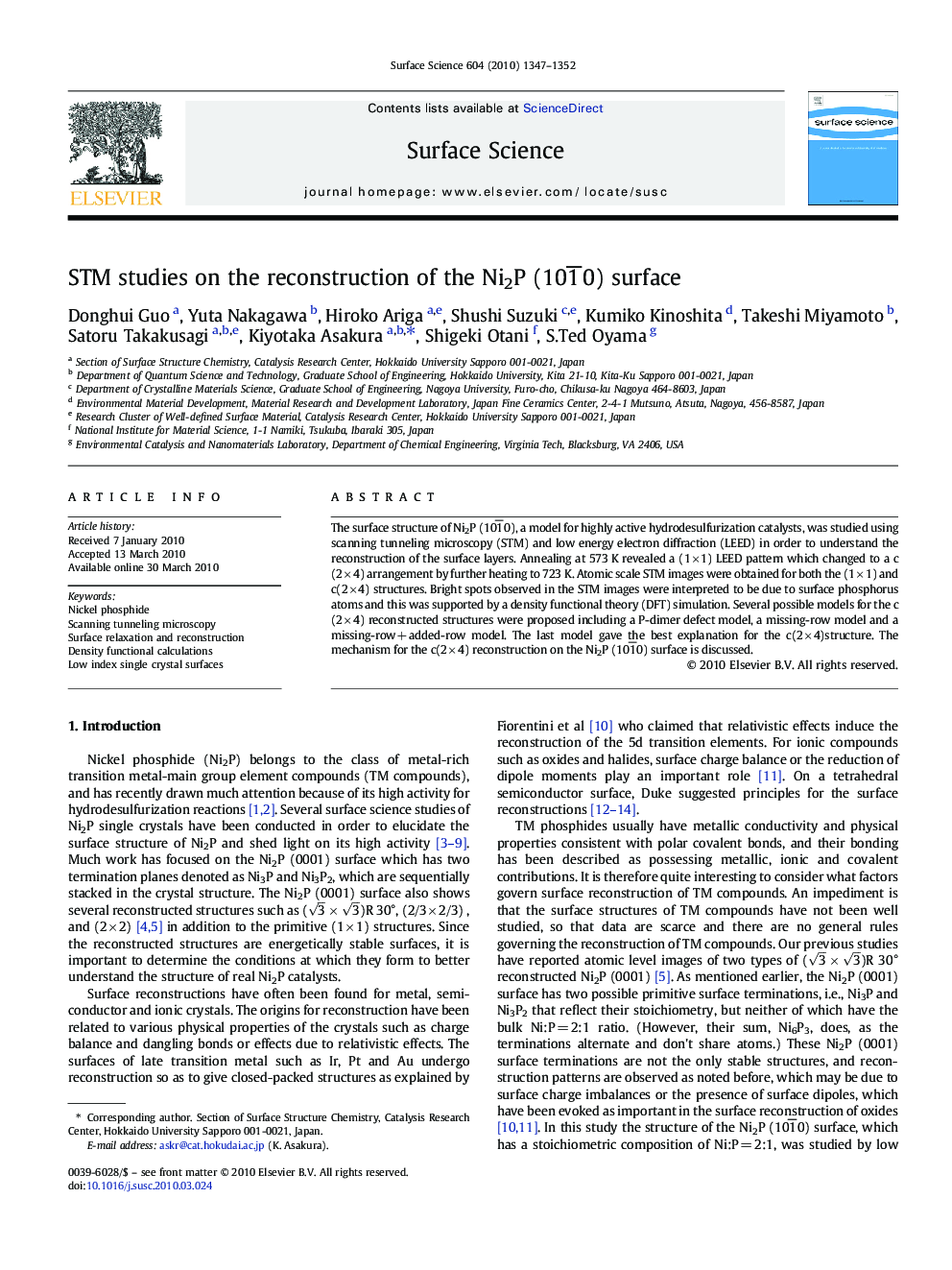| Article ID | Journal | Published Year | Pages | File Type |
|---|---|---|---|---|
| 5423060 | Surface Science | 2010 | 6 Pages |
Abstract
The surface structure of Ni2P (101Ì
0), a model for highly active hydrodesulfurization catalysts, was studied using scanning tunneling microscopy (STM) and low energy electron diffraction (LEED) in order to understand the reconstruction of the surface layers. Annealing at 573 K revealed a (1 Ã 1) LEED pattern which changed to a c(2 Ã 4) arrangement by further heating to 723 K. Atomic scale STM images were obtained for both the (1 Ã 1) and c(2 Ã 4) structures. Bright spots observed in the STM images were interpreted to be due to surface phosphorus atoms and this was supported by a density functional theory (DFT) simulation. Several possible models for the c(2 Ã 4) reconstructed structures were proposed including a P-dimer defect model, a missing-row model and a missing-row + added-row model. The last model gave the best explanation for the c(2 Ã 4)structure. The mechanism for the c(2 Ã 4) reconstruction on the Ni2P (101Ì
0) surface is discussed.
Keywords
Related Topics
Physical Sciences and Engineering
Chemistry
Physical and Theoretical Chemistry
Authors
Donghui Guo, Yuta Nakagawa, Hiroko Ariga, Shushi Suzuki, Kumiko Kinoshita, Takeshi Miyamoto, Satoru Takakusagi, Kiyotaka Asakura, Shigeki Otani, S.Ted Oyama,
